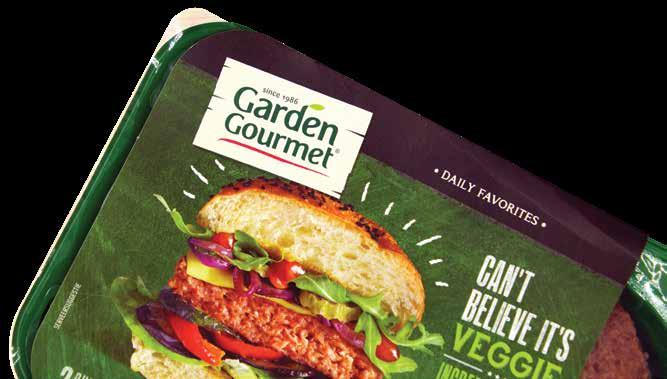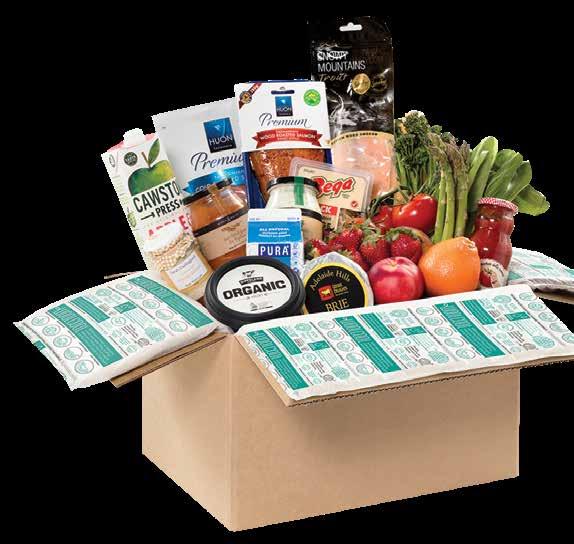
6 minute read
SUSTAINABILITY
Plant-based proteins are starting to make huge inroads into what has traditionally been the purview of meat.
The rise and rise of plant-based proteins
Today, the consumer owns the narrative of what food and beverage manufacturers are producing. Food & Beverage Industry News explains why.
According to Trent Duvall, 20 years ago the food and beverage processors and manufacturers controlled the narrative in relation to what foods and drinks were consumed by customers. Then, it shifted to the retailers. Today, it is consumers that are running the show. And if you are a manufacturer of food and beverage goods, it’s advisable that you sit up and take notice of your customers like never before.
Duvall is the national sector leader, consumer and retail for KPMG, and was speaking to group of food and beverage primary producers at the FoodTech event held mid-year in Brisbane.
Consumers are becoming more discerning with regards to the healthiness of food, how it is packaged, and its effect on the environment, he said. Not only that, but his main point was that plant-based proteins are going to have a big impact on the food panorama over the next decade.
And Duvall is no vegetarian/vegan evangelist – he is a proud omnivore and likes nothing better than to tuck into a nice, juicy steak. However, he said the landscape is changing, with an anecdote from a recent trip to the US reinforcing the shift.
“We went to Disneyland’s Adventure World, which was also home to the California Food and Wine Market Spring Fair,” he said. “There were stalls everywhere – different foods and produce. We walked past a stall that had this beautiful-looking burger patty with guacamole on top. I had to have one. For five minutes, myself and my wife and kids lined up to pay for one of these sliders – and they were to die for. Imagine the best burger you’ve had, the oil coming down the side of your hands. I looked across at my 10-year-old son – his was gone in a flash – nothing but a little bit of avocado left on the side of his face. Perhaps the best slider I’ve had. It turned to be a plant-based slider. First time I’ve had one. And it was fantastic.”
Part of Duvall’s brief is to spot coming trends. He counsels those in the food and beverage processing and manufacturing space who are putting their company’s value chain together to respond to these trends and create opportunities for their companies.
While plant-based proteins are gaining popularity, there is still an issue getting the average punter to buy into the trend. Duvall gives the example of New Zealand’s Hell Pizza franchise, which released to market a burger-flavoured pizza. For the first four days it flew off the shelves – the market couldn’t get enough of them. They were selling out. Hell Pizza then announced that the meat wasn’t beef, it was made from plant-based protein.
“Social media went into meltdown, because people were saying to the company, ‘how could you lie to us?’” said Duvall. “There was no lying per se, it was just a burger-flavoured protein. We are going to see the same things coming through in the Australian market and they are going to be marketed as being better for you and less processed. And they are better for you in terms of less fats and higher protein content per gram.”
Not to be outdone, Domino’s in Australia has announced an exclusive partnership with a Queensland manufacturer to create plant based “meat” for its pizza toppings and plan to be the first pizza chain in Australia to launch alternate meat pizzas.
Importantly they will be lower in saturated fat and higher protein than the comparable meat pizzas.
Long-term consumers of existing products need not fear that their favourite food or beverage will be disappearing any time soon. The market for meats and processed foods is still strong. What Duvall is pointing out is that the younger generation of consumers is causing a change in the market and it behoves processors and manufacturers to be aware of these changes if they don’t want to get left behind. He cites the example of Shreddies, a popular cereal from Canada and the UK that was first produced in 1939, and was available in Australia.
“The packaging has now been changed – not only does it say ‘wholegrain’ in the top corner of the packet, it’s also now says ‘vegan’,” said Duvall. “So why is vegan important to our kids? It’s not. They don’t know that. But it is important to the mum that is buying it. Shreddies is repositioning itself in the market.”
And to reiterate the point, Meat and Livestock Australia (MLA) also know that customers – again primarily the younger generation – will be the ones making choices about what they will be consuming. MLA’s marketing campaign is concentrating on animal health and welfare, environmental sustainability and nutrition. The three questions mentioned in the MLA’s current marketing campaign are: • What’s the consumer talking about? • What does the consumer want? • How do we market to that?
The consumer is now the centre of attention. They are now digitally and data enabled and they’re the ones that are influencing trends, said Duvall.
“The consumer is influencing the government by what they say on social media,” said Duvall. “They are influencing the manufacturers by what they want and it is influencing the retailers and how they are going to get it. And it is about what is good for them. However, what is good for one consumer might be different from the other.”
One of the more interesting trends that Duvall talked about was the introduction of molecular alcohol – not one for the purists. Rather than distilling, makers of alcoholic beverages are using this technique to create a beverage quickly, compared to traditional methods.
“A 20-year-old malt whiskey can
Trent Duvall said the younger generation of consumers are starting to call the shots in the food space.

be reproduced almost overnight,” said Duvall. “Same with vodkas, same with gins. That is where technology’s going. Will the consumer buy it? Maybe. Maybe not. Maybe a consumer likes that fact their whiskey has been distilled or aged for 20 years. Others might be interested in the newer version because of the price point, or because it is a different style of product they see as being good for them.”
“Big and small companies are doing different things to drive innovation to meet what the consumer demands and needs,” said Duvall.
And another technology that has been mentioned recently in Food & Beverage Industry News (September issue) is 3D printed food. Duvall

compared 3D printing technology to where Nespresso coffee machines were 10 years ago.
“In the space of a couple of years, with the product positioned at the right point, Nespresso has made its way into many homes,” he said. “You go back 10 years, nobody would have thought to put a Nespresso machine in their house. There has been a rapid change in how we consume coffee. Printing your food using a pod and having a machine that can do that in every house is probably not that far away.” The last point Duvall wanted to make on coming trends was to do with the state of consumers themselves. There are those who are more carnivore than vegetarian, while most people lie somewhere in the middle. However, he said that there is a growing number of flexitarians, those who generally engage with eating plant-based foods, but still include meat in their diet.
“They are people like me who like meat but will try a lot of alternatives,” he said. “And it might be part of my diet because generally it might be good for you. There has been an acceleration of change in terms of the products that are coming to our supermarkets in the last year. In the last six months alone it has rapid. Those different alternative proteins and foods are rapidly changing. In 12 months’ time, there will be a proliferation of those types of products in the market.” F










